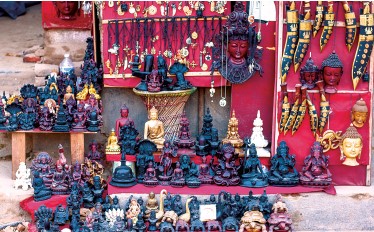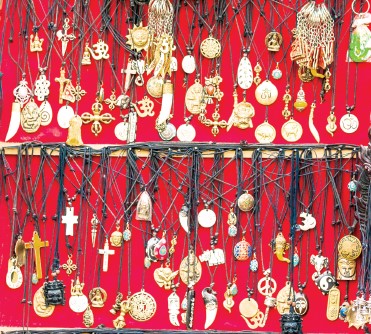Strolling down the nooks and gallis of Patan has never bored me, and I have always felt that I am familiar with most of the places here. For me, Patan has mostly been about temples, shopping for unique knick-knacks and souvenirs, and local elegance. But, this time, it was something beyond my expectations. It was late evening when I was wandering around its streets. Craving for a quick bite, I went to a nearby teashop. With my legs folded, I was sipping a warm cup of tea, when my sight fell on a traditional home built in vernacular style, situated just opposite to the tea shop I was in.
To my surprise, this building was a coffee shop known for its fine handmade coffee. A group of teenagers sitting beside me told me that the place is creating quite a buzz around the city these days. The building’s seamless merge of contemporary and traditional style was, in fact, a glance into the history of Nepalese architecture. The initial view of the place itself took me back to the Malla era that articulated a similar structure. The locals claimed that the place had been unaffected even by the devastating earthquake, and has been standing there firmly since the Malla period. This ancient two-storied house attractively showcases concrete paved structures in its left entrance, where an old man wearing a Dhaka topi is often seen selling antique handicraft items that he brings from Basantapur.
Taking your time to fall in love with the beautiful artwork of the huge wooden windows is something that a visitor must not miss. I could not stop myself from taking a snap of those illustrations on the windows, which provided me a picturesque view of the historic Patan Durbar Square with its invaluable art and architecture. The old man at the entrance, listening to Nepali songs on his antique tape, enthusiastically offered handicrafts at very decent prices. I bought a small tortoise, which was made of stainless steel, and then went upstairs to have a closer look at the café.


The ambiance indoors was just as rich as the outdoor architecture, but with a modern touch. On entering, my eyes fell at once on the engaging historical portraits on its walls. Every nook and corner was arranged in order; from the artistic curtains to the vibrant Nepali carpet. Despite a contemporary touch, the place possessed the same rich vibe of Nepali tradition. The sight of customers sitting on the floor and sipping coffee made me recollect old Nepali movies in which families had a similar kind of sitting arrangement in their homes. Though I usually drink only tea, the reputation of the place made me taste their handmade coffee, which took me back to those Ilam days where the coffee beans from the farms smelled the same.
Exploring the streets of Patan, one never gets jaded, as they always offer something new every time you visit. Though I had visited Patan many times, I had never been so impressed by any building as this—it was something different, reflecting a perfect blend of history and contemporary art. With a smile on my face, I bid adieu to this place with a desire to visit again very soon.










